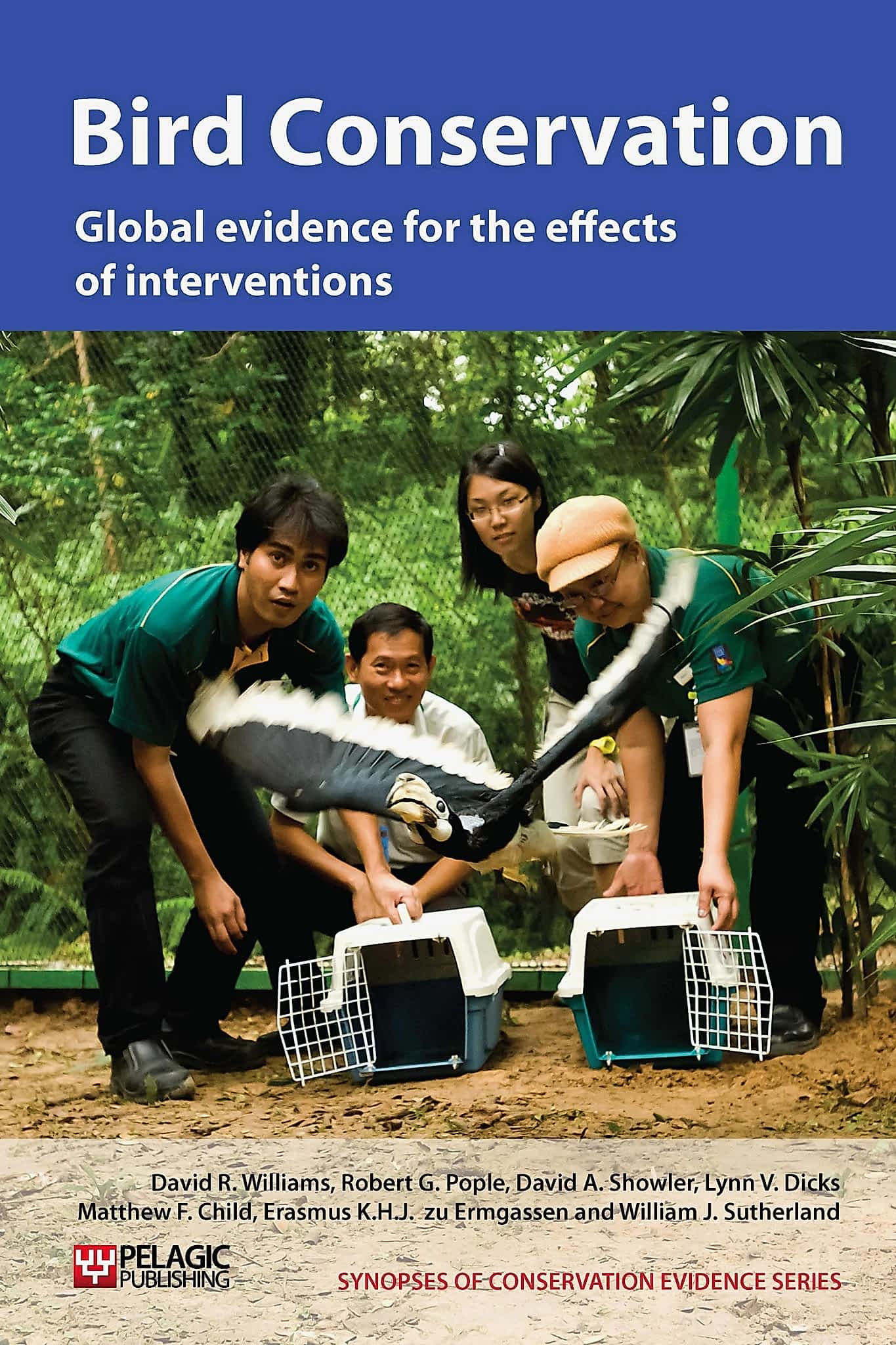Actions to conserve biodiversity
We have summarised evidence from the scientific literature about the effects of actions to conserve wildlife and ecosystems.
Review the evidence from the studies
Not sure what Actions are? Read a brief description.
454 Actions found
Refine
Hide
454 Actions found
Download Actions
Order results by:
| Action | Effectiveness | Studies | Category | |
|---|---|---|---|---|
Restore or create traditional water meadows Action Link | Likely to be beneficial | 5 | ||
Control mammalian predators on islands for songbirds Action Link | Awaiting assessment | 5 | ||
Control predators not on islands for gamebirds Action Link | Awaiting assessment | 5 | ||
Physically protect nests with individual exclosures/barriers or provide shelters for chicks of songbirds Action Link | Likely to be beneficial | 5 | ||
Use artificial nests that discourage predation Action Link | Likely to be beneficial | 5 | ||
Can nest protection increase predation of adults and chicks? Action Link | Evidence not assessed | 5 | ||
Use aversive conditioning to reduce nest predation by mammalian predators Action Link | Unlikely to be beneficial | 5 | ||
Protect nest sites from competitors Action Link | Unknown effectiveness (limited evidence) | 5 | ||
Control or remove habitat-altering mammals Action Link | Likely to be beneficial | 5 | ||
Remove/treat endoparasites and diseases Action Link | Trade-off between benefit and harms | 5 | ||
Translocate wildfowl Action Link | Likely to be beneficial | 5 | ||
Translocate nests to avoid disturbance Action Link | Unknown effectiveness (limited evidence) | 5 | ||
Use captive breeding to increase or maintain populations of raptors Action Link | Likely to be beneficial | 5 | ||
Use artificial insemination in captive breeding Action Link | Unknown effectiveness (limited evidence) | 5 | ||
Artificially incubate and hand-rear seabirds in captivity Action Link | Likely to be beneficial | 5 | ||
Release captive-bred individuals into the wild to restore or augment wild populations of wildfowl Action Link | Unknown effectiveness (limited evidence) | 5 | ||
Release captive-bred individuals into the wild to restore or augment wild populations of gamebirds Action Link | Unknown effectiveness (limited evidence) | 5 | ||
Release captive-bred individuals into the wild to restore or augment wild populations of vultures Action Link | Likely to be beneficial | 5 | ||
Release captive-bred individuals into the wild to restore or augment wild populations of parrots Action Link | Unknown effectiveness (limited evidence) | 5 | ||
Manage ditches to benefit wildlife Action Link | Likely to be beneficial | 4 | ||
Physically protect nests from predators using non-electric fencing Action Link | Likely to be beneficial | 4 | ||
Leave uncut rye grass in silage fields for birds Action Link | Likely to be beneficial | 4 | ||
Maintain traditional water meadows Action Link | Likely to be beneficial | 4 | ||
Weight baits or lines to reduce longline bycatch of seabirds Action Link | Likely to be beneficial | 4 | ||
Use prescribed burning on deciduous forests Action Link | Likely to be ineffective or harmful | 4 |
Download Actions

Bird Conservation - Published 2013
Bird Synopsis
Watch this search
If you are familiar with RSS feeds, please click the button below to retrieve the feed URL:
RSS feed for this searchIf you are unfamiliar with RSS feeds, we would suggest reading this BBC article.
Unfortunately, due to the number of feeds we have available, we cannot provide e-mail updates. However, you could use tools such as Feed My Inbox to do this for you.
What are 'Individual studies' and 'Actions'?
Individual studies
An individual study is a summary of a specific scientific study, usually taken from a scientific journal, but also from other resources such as reports. It tells you the background context, the action(s) taken and their consequences.
If you want more detail please look at the original reference.
Actions
Each action page focuses on a particular action you could take to benefit wildlife or ecosystems.
It contains brief (150-200 word) descriptions of relevant studies (context, action(s) taken and their consequences) and one or more key messages.
Key messages show the extent and main conclusions of the available evidence. Using links within key messages, you can look at the paragraphs describing each study to get more detail. Each paragraph allows you to assess the quality of the evidence and how relevant it is to your situation.
Where we found no evidence, we have been unable to assess whether or not an intervention is effective or has any harmful impacts.




















